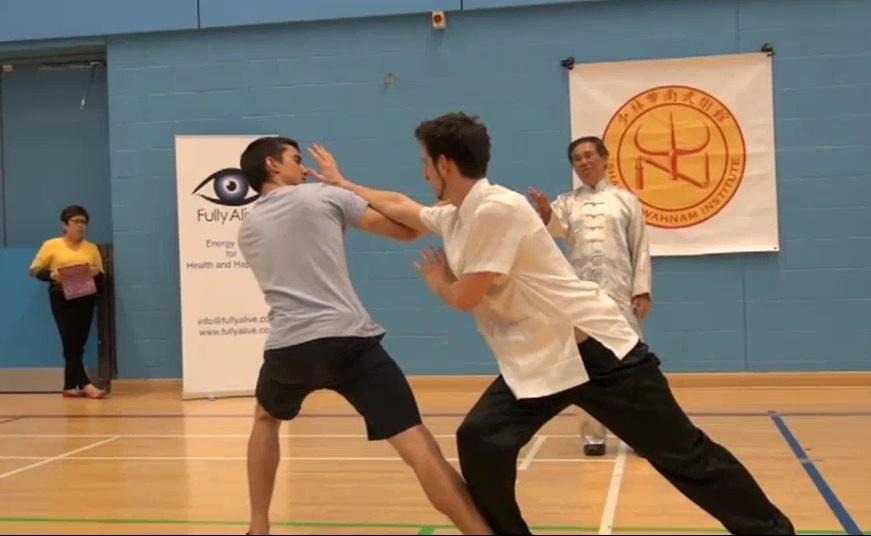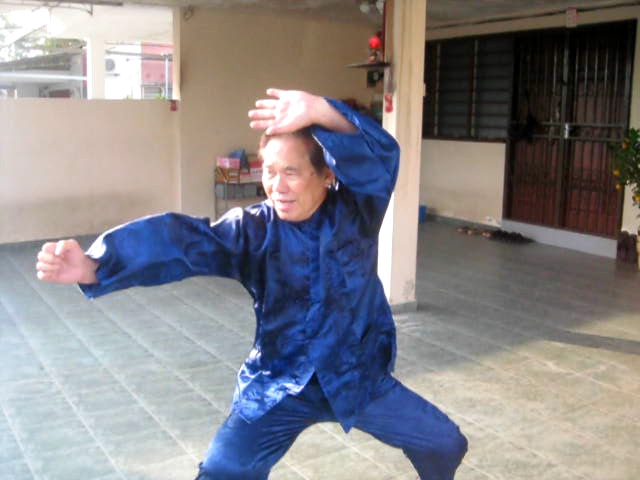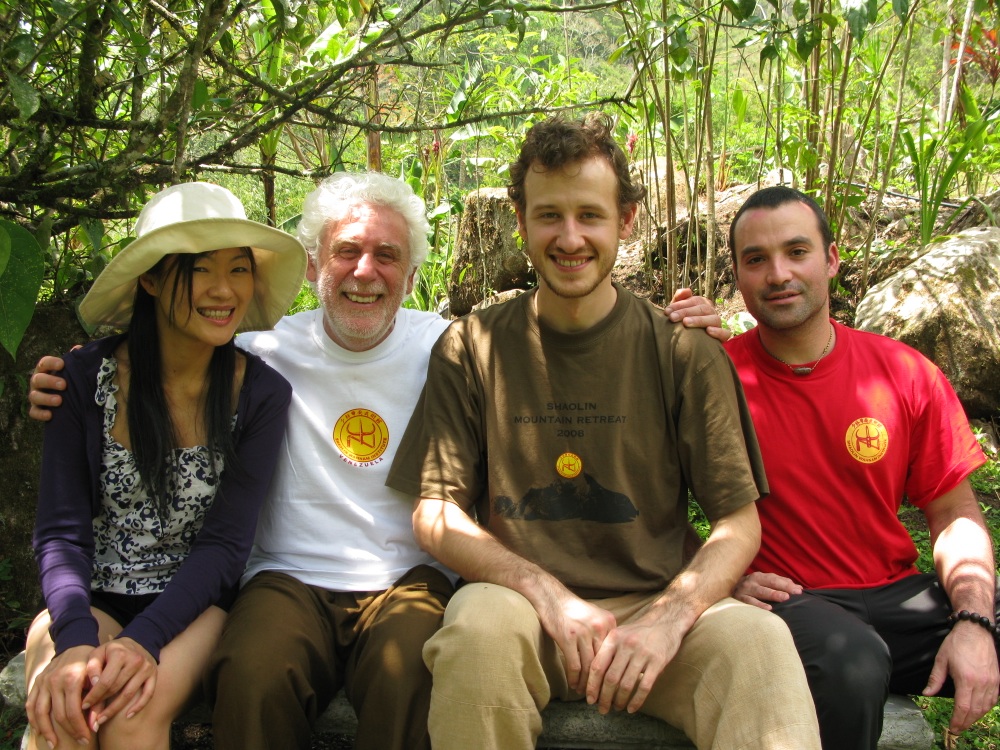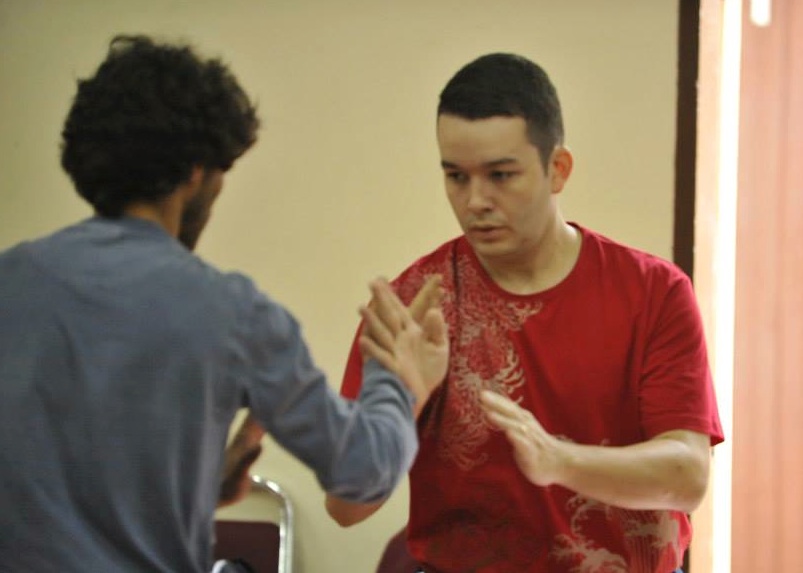SELECTION OF QUESTIONS AND ANSWERS
MAY 2015 PART 3

The goal of all martial arts is combat efficiency
Question 1
I understand that the goal of all martial arts is combat efficiency. If this is the case, and all martial arts have the same goal, and can all be made to work for fighting, how do I choose which one to do?
— James, USA
Answer
Yes, the goal of all martial art is combat efficiency. But you and many other people may be surprised at the fact that more than 80% of martial artists of any style today, including advanced practitioners like black-belts and masters, have no combat efficiency, though many of them are good at punching and kicking others and enduring punches and kicks from others!
If they were combat efficient they would not be so randomly punched and kicked. Indeed, to be punched and kicked in free sparring is so common today that some instructors sometimes ask their students how they could learn a martial art if they could not stand some punches and kicks. This is ridiculous. The very fact of learning any martial art is not to be punched and kicked at all! Yet, many people submit themselves to be routinely punched and kicked, while they punch and kick their friends, when learning what they think is a martial art as a hobby, which is meant to give them pleasure, not pain and injury.
Genuine martial arts where practitioners can defend themselves are rare today. Even amongst these rare martial arts, there are different ways of attack and defence. You may, for example, strike your opponent with your hand, or kick him, or throw him onto the floor, or hold him in a lock. Hence, different types of martial art developed, such as Karate, Taekwondo, Judo and Aikido.
There are also different ways of using the same kind of attack. In striking an opponent, for example, you may use a level fist as in Karate, or a phoenix-eye fist or a palm as in some styles of kungfu. When kicking an opponent, you may kick high at his face, not caring that you expose your groin, or cover his hands and kick at his groin with the in-step of your foot often without him knowing where the kick comes from as in Shaolin Kungfu. Hence, different types of martial art evolved.
On the other hand, there are also different ways to respond to the same attack. When an opponent kicks at your middle level, for example, you may block the kick with your hand and move in to strike him with your punch as in Karate. Or you may, without moving your feet, shift your body slightly backward to avoid the kick, and simultaneously grip his kicking leg and dislocate his ankle as in Taijiquan.
This difference leads to the development of different martial arts which serve different purposes in combat. A woman or a physically weaker person, for example, would be at a disadvantage if she blocks a kicking leg, but there is no disadvantage in the second response where she avoids the kicks and simultaneously grips the leg. The blocking response is also more risky.
The two different responses show a different development of skills. The first response is crude, whereas the second response is sophisticated. Herein is another reason why there are different martial arts. Initially fighting techniques were straightforward and crude, but over time they became refined and sophisticated.
While all martial arts are meant for effective fighting, this is not the only function of some martial arts. Depending on their functions, martial arts may be divided into three classes.
Third class martial arts are those that are meant only for fighting. Their training is sometimes detrimental to health. To avoid hurting the sensitivities of their practitioners, I would refrain form giving examples of these martial arts.
Second class martial arts are those that are meant for fighting as well as for improving health. I would leave you to figure out some examples.
First class martial arts are those that are meant for effective fighting, health promotion and spiritual cultivation. Shaolin Kungfu and Taijiquan are two outstanding examples.
Of course I refer to genuine Shaolin Kungfu and genuine Taijiquan, which are rare today. If you practice Shaolin or Taijiquan forms for demonstration, and do not know how to apply them for combat, you do not even practice a martial art, you practice "flowery fists and embroidery kicks". If you practice Shaolin and Taijiquan forms but use kick-boxing or other martial systems for fighting, then yours is a third-class martial art.
Some practitioners of third class martial arts may say that their arts promote health and contribute to spiritual cultivation. This shows their blind loyalty or ignorance, or both. They are so blindly loyal to their arts that they claim benefits when these benefits are not present. They are ignorant that the more they train their art, the more unhealthy they become.
They are also ignorant of what spiritual cultivation means. It means cultivating their spirit. If they remain, or worse still become, stressful, angry, agitated, nervous or depressed, they have not cultivated their spirit.
The explanation here not only shows that all martial arts are not the same, but also provides you with a sound philosophical understand to make a good choice if you wish to practice a martial art. Without this explanation, it is likely that you may fail to practice a martial art though you think you do, because you can only punch and kick each other if you practice free sparring, but cannot defend yourself.
Question 2
I did not return for a second year to the Shaolin wushu academy in China. On the positive side, I did do a lot of exercise and trained diligently by myself in meditation. I learned many forms, including Da Luohan Chuan, Pao Chuan, Taizu Chang Chuan, Nine Palaces Ba Gua, Da Tong Bei Chuan, Qi Xing Chuan, Basic Five-Step Form, Little Idea Form (Wing Chun), Xiao Hong Quan, Da Hong Quan, a staff form and a broadsword form. I finished with half of a Tiger form, but was not taught the rest.
— Namir, USA
Editorial Note: Namir's other questions are found at May 2015 Part 2 issue of the Question-Answer Series.
Answer
These forms you mentioned are famous Shaolin kungfu sets. When you have learned how to develop internal force and use kungfu forms for combat, these kungfu sets will be very useful.
These forms will not only help you to be combat efficient but, more importantly, to enhance your daily life.
To us, meditation is not just seated in a lotus position, but a training of mind or spirit. All our training is meditation, i.e. a training of mind.

Our Shaolin Wahnam version of Daluohanquan, or Big Lohan Fist
Question 3
Thank you for reading what I have to say and guiding me concerning your webpages. I truly needed to tell someone this because recently I emailed my old teacher, the headmaster of the school, and asked about these things, including the behavior of the students and the Kung Fu sparring, and I was given as usual an angry and defensive reply. This is due to his training I know now.
Answer
Congratulations for your sharp observation, which not many people may realize and benefit from. Yes, the way he replied to your e-mail was due to his training.
Not only his training lacked critical thinking and applying kungfu techniques for combat, his dogmatic and stressful training also conditioned the way he responded to daily situations. It will be interesting to compare the way he replied to questions to the way Shaolin Wahnam members replied to questions in the Shaolin Wahnam Discussion Forum.
Question 4
Now I am a student without a teacher. I am lost! I cannot learn the Shaolin arts without a true teacher. You are the only Shaolin Kung Fu teacher that I am aware of that teaches Kung Fu sparring. Do you have some sort of school available whereby I may attend and train for a long period of time, that I may learn intricacies of Kung Fu sparring and gain Shaolin force and skills?
Answer
Thank you for you kind comments.
While we are proud (in a good way), we are also sad that we are the only school we know that teaches kungfu sparring systematically, considering that there are so many kungfu schools in the world and that kungfu is actually an effective martial art.
But what makes us the proudest is not that we teach kungfu sparring, but that we teach our students to apply their training to enrich their daily life, and we are very glad of the result we have.
We have instructors in many places. Please see our List of Certified Instructors.

We practice our art to enrich our lives
Question 5
Right now I am training by myself. I train my fingers, and I learn new things by researching. I am even climbing trees everyday like a monkey - I call it Monkey Gong. And I train my vision diligently. I am training night-time vision - Owl Gong, if you will. I am also training uprooting a tree and many other exercises, including fitness exercises.
Answer
Monkey-gong and owl-gong are interesting, and uprooting a tree is impressive. But these are not our priorities in our training. Our priorities are to have good health, vitality, longevity, mental freshness and spiritual joys.
We walk our talk. We do not just mention the purpose of our training for other people but do not check results for ourselves. Recently I had dinner with 6 students who learned Shaolin Kungfu from me more than 30 years ago. I asked them whether they had ever been sick. None of them had!
Question 6
I am a good student, and I train hard. I would love to be your Kung Fu student and ultimately learn sparring methodically so that I may actually have true fighting skill.
Answer
Being a good student is very important in any art. It is simple, but not easy. Basically it is practicing the art according to what the teacher teaches, and not according to what the student thinks the art should be practiced, which is actually the case many people do although they may not realize it.
But before becoming a good student, you must ascertain that the art is worthy of your time and effort, and that your teacher is competent. If you practice a low-level art, no matter how good a student you are, and how competent your teacher is, your results are necessarily limited by the depth and scope of the art. A competent teacher is not only a living example of the art he teaches, but also live his daily life with high moral values.
Although we place much importance on combat efficiency, as we do not want to make a mockery of our practicing a martial art, it is not our top priority. We dedicate ourselves to practice our art diligently because it enriches our lifes and the lives of other people.

Taijiquan is an internal martial art
Question 7
I hope you enjoyed Hawaii, as I saw on your website you must be in Hawaii. I thought I'd follow up on my previous email. I was thinking that perhaps you could guide me as to a training plan that is right for me. I would like to reimburse you for teaching me as well.
Editorial Note : These questions were asked during the time of the Hawaii courses in July 2014. But because of a long waiting list, they are released only now.
Answer
I enjoyed myself tremendously in Hawaii. The courses were also very rewarding. For example, in a Zen course, using techniques and skills I taught them, students could immediately give a short talk on any topic supplied on the spot by the class, often drawing interest and laughter from the audience.
A good plan is for you to learn the basic 16 Shaolin Combat Sequences from any certified Shaolin Wahnam instructor or from my website, and then attend my Intensive Shaolin Kungfu Course. I offer such courses only once or twice a year Please see my website for availability.
You need not pay me for such advice. It is great to share useful information with deserving people.
Question 8
I am willing to make it to Malaysia and study with you intensely, and especially study kung fu sparring. However it may not be for some months due to some circumstances that I will be able to go there (that is, if you have a place for me). In the mean time I would like your guidance.
Answer
Staying in Malaysia to learn from me in an extended period is not necessary. It is most cost-effective to attend my intensive courses.
Most people, understandably, may wonder what they can learn in a few days of an intensive course. The truth is that they can learn and benefit a lot, usually beyond what they can even imagine. These intensive courses are life-changing for many people. Some of them, by just practicing what they had learnt at the course, became masters themselves and brought life-changing benefits to their own students.
Question 9
I recently purchased "The Complete Book of Shaolin" and have been doing exercises from it. My main problem is I lack a sparring partner.
Answer
Many people have kindly reported to me that "The Complete Book of Shaolin" is the best book they have read on Shaolin. They have benefited not just in sparring efficiency but in many aspects of their life.
You and many other people may be surprised that a sparring partner, while helpful, is not a necessary requirement for combat efficiency.
Look at those who spar frequently with sparring partners. Can they defend themselves? Be ready for a big surprise. No, they can't, otherwise they would not be routinely kicked and punched, which, ironically, some may even take for granted!
You can train on your own without a sparring partner to become combat efficient using genuine Shaolin Kungfu techniques. In fact, training on your own, and not with a training partner, is a very important part of becoming combat efficient. It is the way how masters are made.
A good approach is to use the Shaolin 16 combat sequences. The webpage here shows how these 16 combat sequences are performed.
First you need to learn the basic stances, footwork and basic patterns. These are reviewed at the start of my Intensive Shaolin Kungfu Courses, such as at the Intensive Shaolin Kungfu Course in Sabah shown here.
Then you practice the Shaolin 16 basic sequences. You can learn all the required techniques from my webpages. However you need to develop the necessary skills, which you have to acquire at an Intensive Shaolin Kungfu Course. This is the main reason why many people do not have the desired result even when they know the techniques in kungfu, chi kung or any art.
Many chi kung students, for example, know and can perform chi kung techniques very well but they are still weak and unhealthy. This is because they do not have the skills to perform the techniques as an energy art, which is chi kung.
An analogy is useful. Many people all over the world can perform Taijiquan techniques beautifully, but they do not know how to use the same techniques as an internal martial art, which is Taijiquan. Similarly many people, like those students and instructors you have mentioned, can perform Shaolin techniques artistically, but they do not know how to apply these techniques in sparring or to enhance their physical, emotional, mental and spiritual health, which is the purpose of practicing a high-level martial art like Shaolin Kungfu.
The main difference here is in techniques and skills. Many people learn techniques, but they do not acquire skills. You may learn techniques from books and videos or even from an e-mail, but unless you are already skillful, you need to learn skills from a competent teacher.
LINKS
Selected Reading
- Chi Kung: the Art of Developing Vital Energy
- Lineage in shaolin Wahnam
- The Type of Students Genuine Masters Want
- Twelve Sequences of Shaolin Tantui
- Human-Character Butterfly Knives
